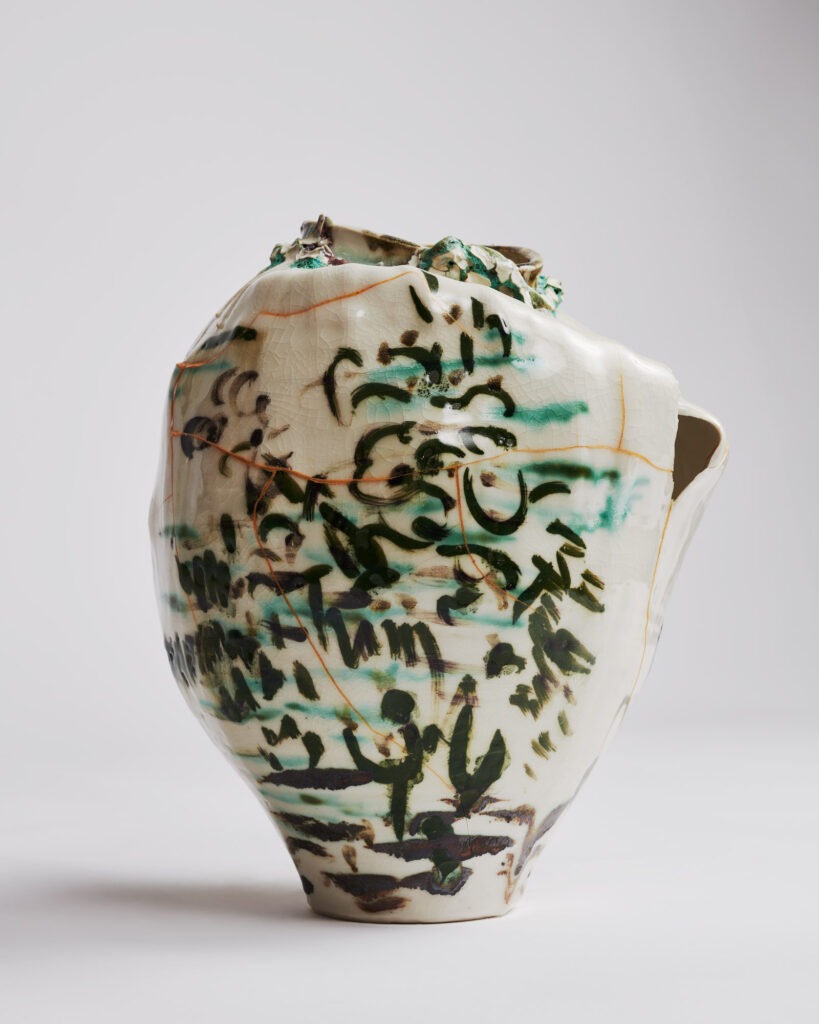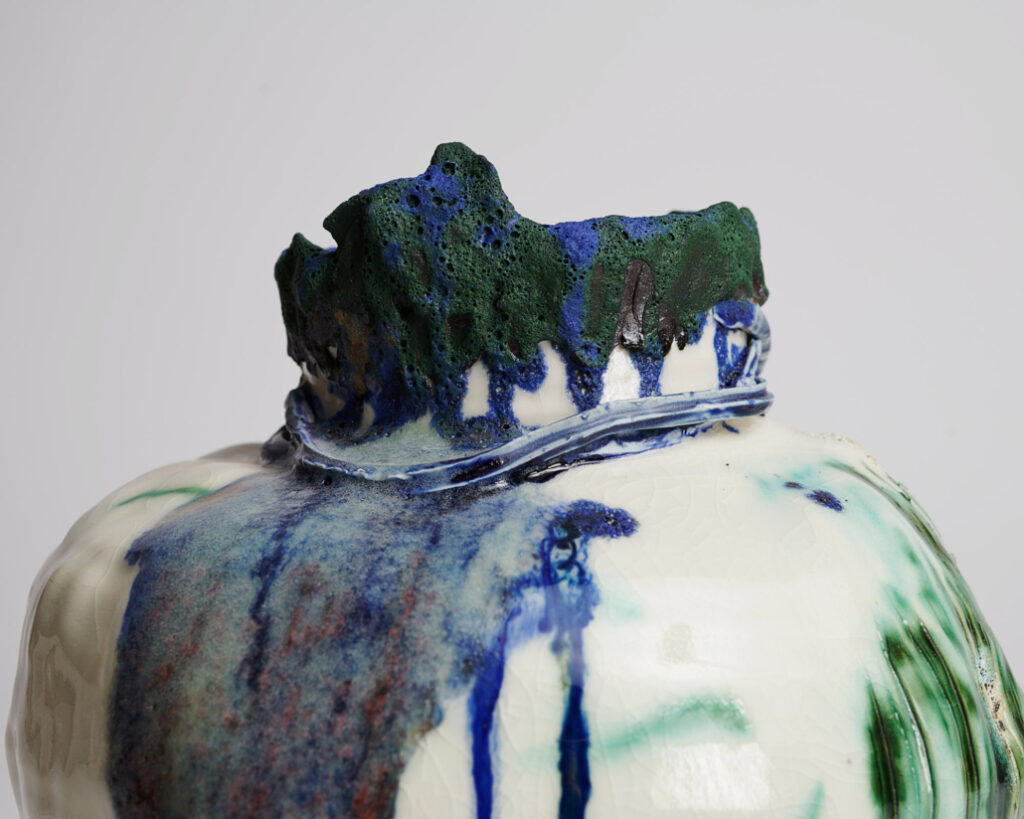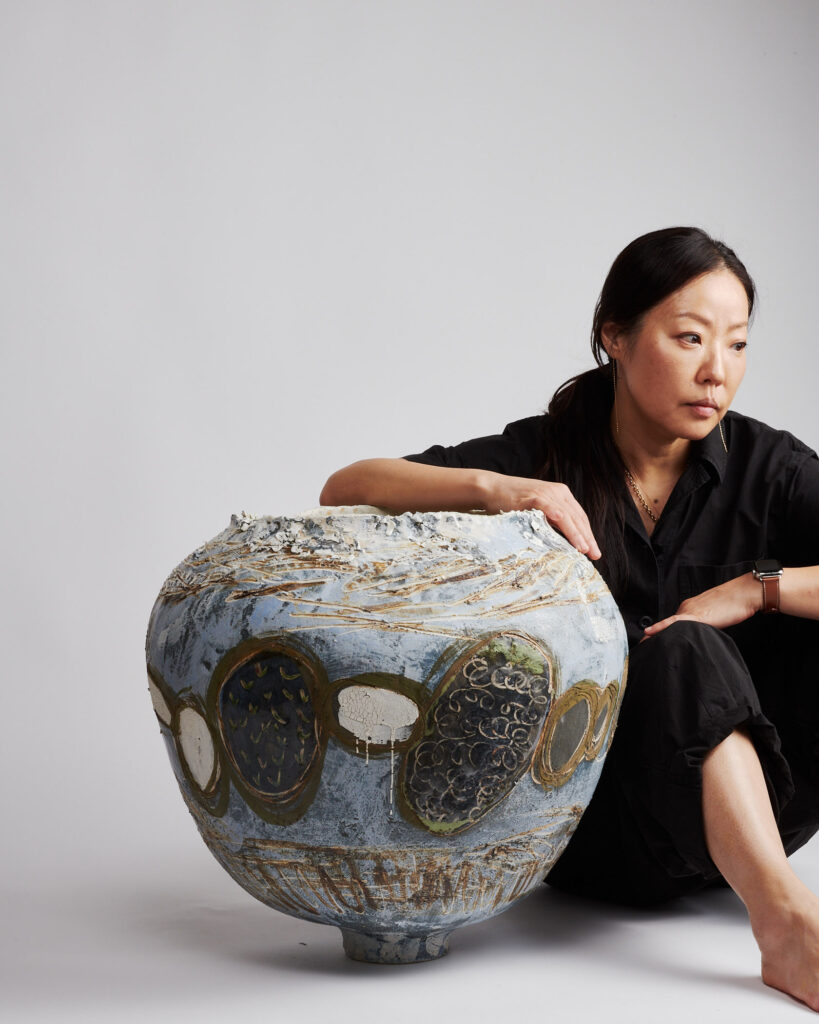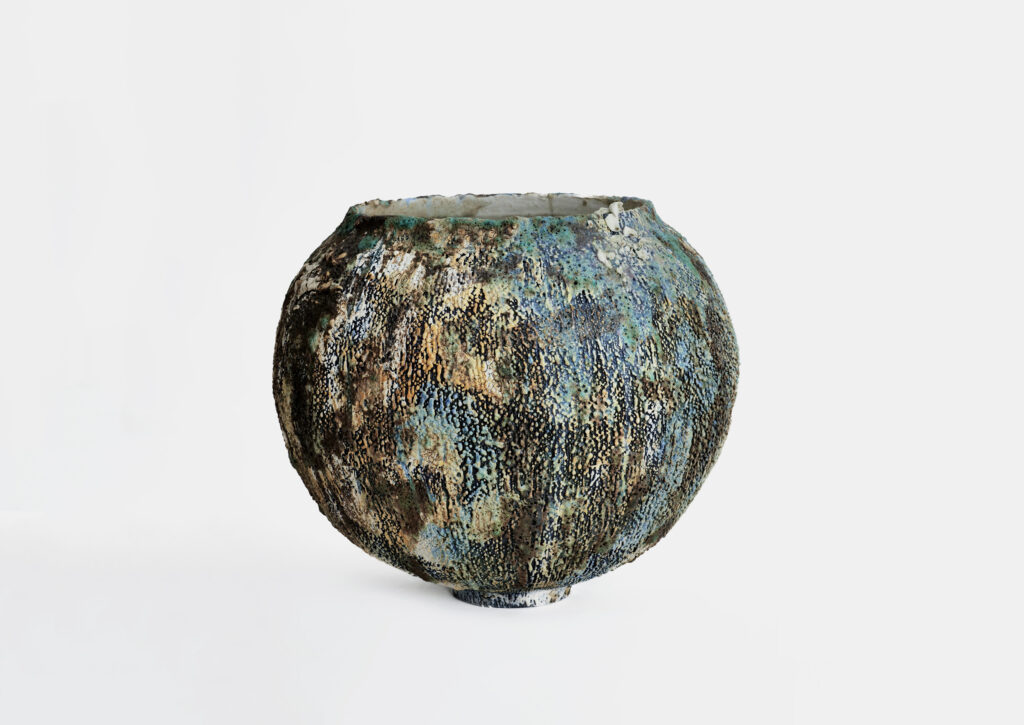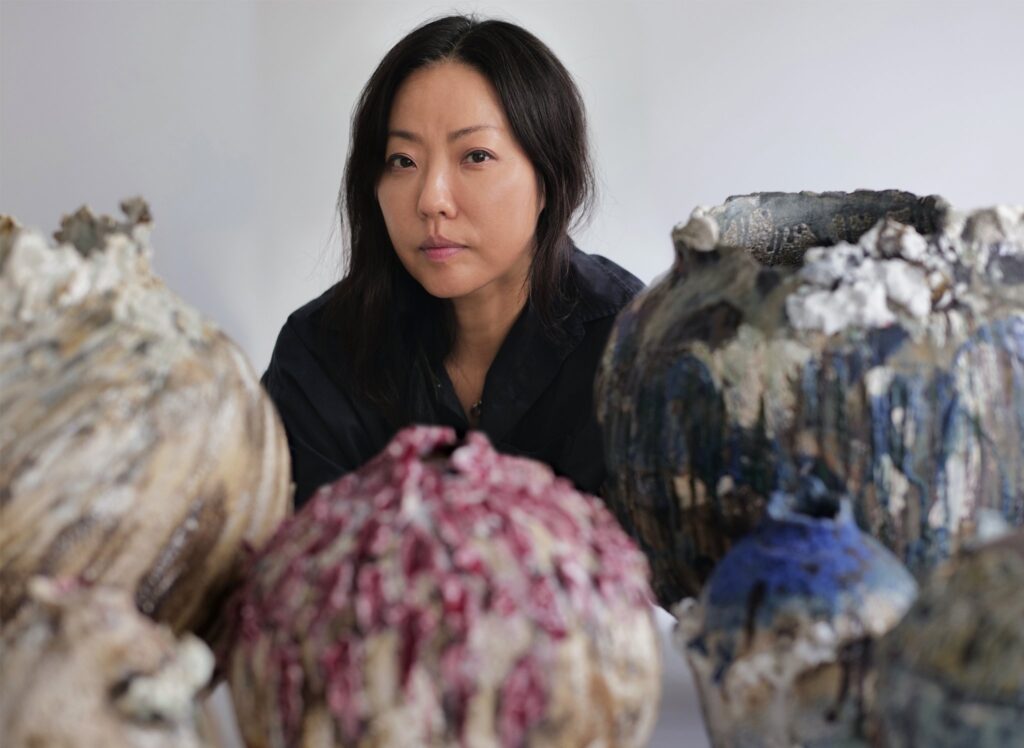
Ceramic artist Jane Yang D'Haene was born in South Korea in 1968. She currently lives and works in New York City.
Recently showcased at Make Hauser & Wirth, Somerset, Bienvenu Steinberg & J New York, and Galerie Italienne, Paris
interview with ceramic artist JANE YANG D'HAENE
Born in South Korea in 1968 and now residing in New York City, Jane Yang D’Haene creates vessels that masterfully reinterpret the dynamic interplay of global artistic traditions. Her formative years in Korea, before migrating to the USA at the age of 16, left an indelible mark that has profoundly shaped her artistic perspective. After her arrival in New York, D’Haene earned a degree in architecture from the Cooper School of Architecture, which led to a successful career as an interior designer at a premier architecture firm. In 2017, however, D’Haene redirected her career towards fine art and ceramics, finding the rhythmic and expressive potential of clay to be a transformative outlet for her internal struggles. The medium’s inherent malleability and its potential to materialise the intangible became a vital tool of self-discovery and release. Central to her oeuvre and practice is the culturally significant Dal Hang-ari, or Moon Jar: a vessel deeply entwined within the depth of Korean ceramic tradition and the broader essence of national identity. Originating during the Joseon Dynasty (1392-1910), the Moon Jar embodies the ideals of the neo-Confucian philosophy that dominated popular thought across this extended period. The virtues of simplicity, modesty, and purity, found resonance in the near-perfect spherical form and pristine white porcelain finish. For D’Haene, the Moon Jar serves as a conduit for revisiting these cultural values through a contemporary and personalised lens of the internal psyche. Using the traditional two-bowl technique that is primarily hand coiled, she initially shapes the Moon Jar, only to deviate from its expected perfection. The clay is instead torn, carved, and pushed—disrupted through a sequence of ad-hoc gestures that find their roots in their creator. Something of the Abstract Expressionist philosophy posits itself here – the inner subconscious finding voice through spontaneous motions and marks. Using her own recipe for glazes and clay, she creates a vessel that captures a chaotic beauty. With thrashes, jabs and punches of colour that traverse each surface, her work becomes an exposé of a deeper passion and psychic drive. They dance with a bold defiance against the serene hush of the refined and anonymous values whispered throughout the centuries of traditional Korean vessels. For D’Haene, the Moon Jar undergoes a process of suffering that unveils the scars from within – scars that mirror the internalised conflicts beween an Eastern tranquility and Western dynamism. Whilst built on the foundational ideals of refined, submissive beauty, what instead emerges is a vessel reimagined, one that is borne of ancient Eastern ceramic traditions, yet redefined with a contemporary Western vitality that transcends borders and epochs.
How long have you been working with clay?
I’ve been working with clay for 7 years now. I started it January 2017.
How would you define clay and your relationship to it?
I share all my emotions with this material. It became the most grounding, sensitive, meditative yet creative material I’ve ever worked with.
Which artists, either contemporary and historical, have had an impact on you over time?
My work is very influenced by Korean Ceramic tradition. Outside of that, I love Cy Twombly and Louise Bourgeois. Twombly inspires me not just through his artistic expression, but primarily for the sense of liberation his work evokes in me. As for Bourgeois, nearly every female artist finds her to be an inspiration. Her relentless dedication to art, and her ability to express life and emotions through her work, are deeply inspiring to me. I aspire for people to perceive a similar dedication and emotional resonance in my own work.
What other influences have seeped into your work during your career?
I have been having physical challenges due to my health issues for last 6 years. Due to this condition, I have had to adapt to new ways of working with clay. It has encouraged me to re-evaluate my perception of aesthetics, including beauty, perfectionism, scars, traumas and life in general. These thoughts and perception shifts have hugely impacted my current body of work.
Are there any traditional threads that exist in your practice? If so, what are they?
My work very much stems from Korean traditional forms. Although this is their base, I then very much change them to become something else, something more. However, my Korean heritage is deeply rooted in my work.
Can you explain your process of making?
Seventy percent of my artworks are crafted using the hand-coiling technique, beginning from the base and meticulously coiling to form large vessels. These pieces undergo multiple glaze firings, a process perfected through experimentation and patience.
The remaining thirty percent of my works start as wheel-thrown vessels, expertly shaped before I transform them through slicing and additions. My approach to glazing mirrors that of painters working on canvas, emphasising purity and artistic expression.
What role does experimentation play in your artistic practice?
For me, almost every aspect of ceramics is about experimentation due to the way I create my pieces – it plays the most important role for me. I believe that continuous experimentation can only lead to better result.
What role does colour play in your work?
I was always afraid of using colour at the beginning. Most likely because I was afraid of making mistakes by selecting the wrong colour. However, I’ve recently granted myself the freedom of release from this perfectionism as I have developed a much more dynamic palette. Maybe that means I am less interested in being perfect.
Would you say your work is charged with emotion – If so, which emotions and do you think the viewer might be able to feel them?
I think all of my recent works are centred around emotions since it’s mostly about me, my memories and my life. Vessels are made to hold something. I believe my vessels are holding a part of me and I would like to believe people will feel them.
What are some of the core themes/concepts that you explore in your ceramic work, and why are they important to you?
Central to my artistic themes are memories — from cherished childhood memories in Korea, to reflections on my own body, and the evolving memories imbued in each piece I create. Each vessel carries its own unique narrative, echoing memories from its inception on the wheel to its final form.
What is your perception of the recent surge in interest in ceramic art?
I think it’s really fantastic. Clay is the most grounding material. It brings a calmness to people, almost like meditation. With such fast-growing technology, I think clay has the power to bring incredible balance to everyday life. I recommend everyone try at least once. It’s hard to stop because it’s so magical.
‘Throughout my creative process, I undergo a journey of suffering with each vessel.
Yet, when I present them to an audience, people will often comment, “These are so beautiful.”
Indeed, they are beautiful. Their beauty is derived from the pains that shaped them’
.
[Jane Yang D’Haene in conversation with Art Formes]


